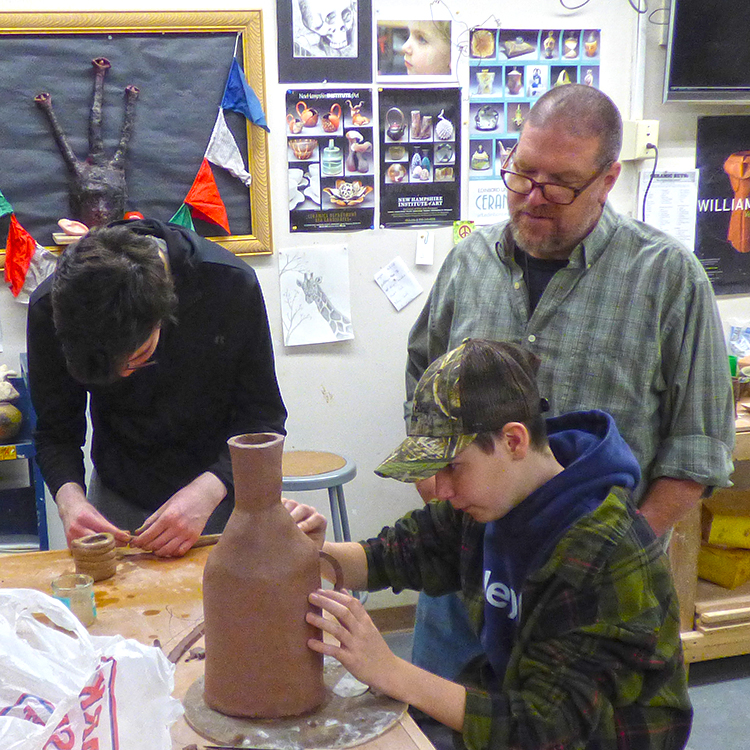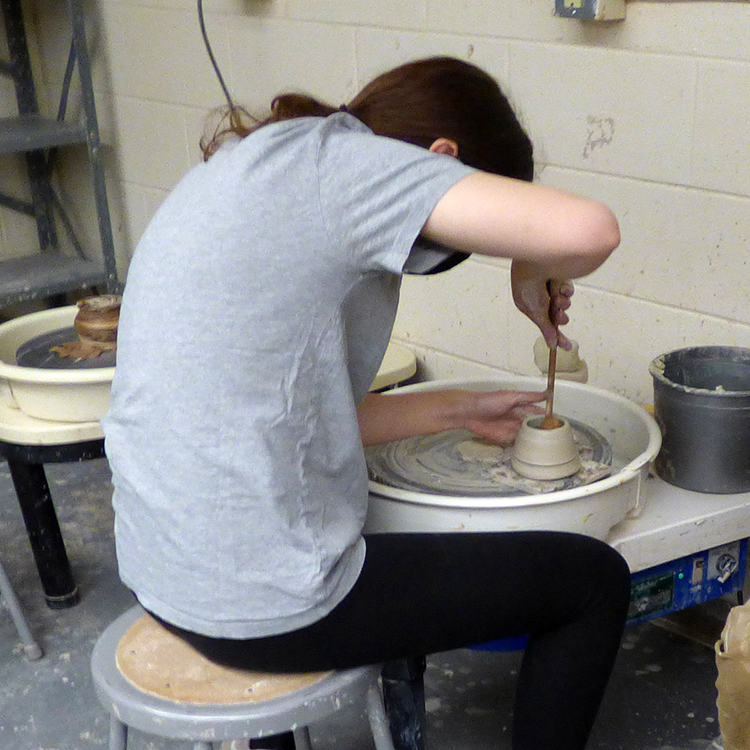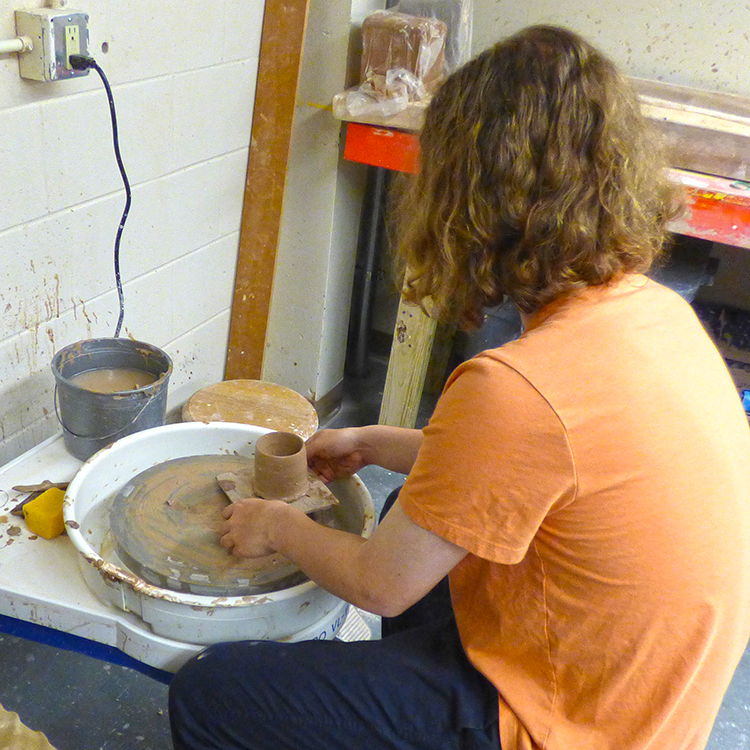Students in Ben Putnam’s ceramics class learn the art of creating objects by carefully wedging clay, then shaping it with hand-building techniques or using the pottery wheel or extruder.
The completed objects are dried and fired in an electric kiln and finally decorated where different ceramic glazes and painting techniques are employed.
The class was encouraged to experiment and explore forms other than the traditional cylindrical vessels. As Holland Calcutt, a freshman student in the class, explained it, “The ceramics class began a collaborative challenge putting a twist on a teapot form inspired by nature.”
Ceramics is one of the most longest-standing art forms to have emerged in human history. The oldest known ceramic figurine, the so-called “Venus of Dolní Věstonice,” traces back to the Czech Republic in 29,000–25,000 BCE, during the Upper Paleolithic period. A 2012 study published in the journal Science confirmed that the earliest known ceramic pots, found in Xianrendong Cave in China’s Jiangxi Province, were made during the height of the Ice Age.
This means that the creation of ceramic objects predates the emergence of agriculture in the Neolithic period by some 10,000 years, and the medium continues to be explored by master potters worldwide today.






